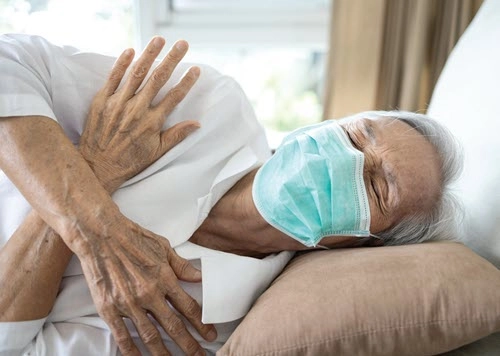MDS Alert
Tick These Boxes for Pain Management
Prioritize the resident but know that surveyors are evaluating staff responses. As providers, nursing homes are subject to regulations designed to make sure that residents who need pain management receive treatment and care that meets professional standards of practice, is appropriate for their comprehensive care plans, and is respectful of the individual resident’s preferences and goals, says Linda Elizaitis, RN, RAC-CT, BS, president and founder of CMS Compliance Group in Melville, New York. Surveyors are looking for appropriate pain management and citing facilities that don’t comply with F697. Pain management is notoriously difficult to facilitate, and surveyors are looking for signs that facilities are doing their level best to manage pain well. Additionally, there are many studies that show Black people and other people of color may have an even harder time getting the pain relief that they need due to institutional and personal biases, which is important to keep in mind when you’re considering your pain management protocols. Make Sure Staff Recognize Pain Elizaitis notes that surveyors will use interviews as part of their assessment of how facilities and staff are approaching pain management. One tact they may use is interviewing staff, especially direct care staff, about their own knowledge of assessing pain, and determining, from their answers, whether their knowledge and skillset indicate competency in mitigating pain. Residents (humans, generally) may express pain verbally, using language or otherwise making noise, or nonverbally, such as grimacing or trying to avoid putting weight or pressure on one part of their bodies. If direct care staff are the ones to notice signs of pain, make sure they have a clear means of telling pertinent colleagues, so the resident can get some relief. For example, the citation for one facility that received a deficiency citation described a situation in which a staff member noticed that a resident was in pain during a meal, but neglected to tell a registered nurse, and so the resident went without any pain relief until their next scheduled medication, which was 10 hours later, Elizaitis notes. Recognizing pain is not enough — staff must also be trained how and when to respond. Remember, too, that staff may need the context of familiarity to note a change that could indicate pain. A resident’s change in mood or interest in activities (if any are happening, right now during COVID-19) could be a sign of pain, even if not an “expression” in the literal sense. Also keep in mind that residents who are living with cognitive impairment may express pain through agitation or other behavioral demonstration or even changes in the sleep cycle, for example. While pain is problematic in and of itself, the ways in which it affects a resident is also vital information. Staff should be using any combination of assessment, personal history of pain as documented in the medical record, information from family or significant others, and other means to figure out whether the resident is in pain and how that pain is affecting their quality of life, reminds Jane Belt, MS, RN, QCP, RAC-MT, RAC-MTA, curriculum development specialist at American Association of Post-Acute Care Nursing (AAPACN) in Denver. “… [T]he facility staff is responsible for obtaining as much information as possible and evaluating the resident’s pain through all available means. Observing the resident during care, activities, and treatments helps not only to detect whether pain is present, but also to potentially identify its location and the limitations it places on the resident,” the Appendix PP State Operations Manual notes, in instructions to surveyors. Listen and Watch During Interactions Basically, your go-to tools for pain management should include communication, assessment, and documentation. Surveyors are looking to make sure that nursing home staff, especially direct care staff, are truly paying attention to the residents in their care. For example, pausing and checking in with a resident who complains of pain, instead of carrying on with whatever action or activity. This kind of checking in is an important part of respecting the autonomy of any other person, especially a care recipient like a resident, but surveyors are evaluating interactions like this, as well. Surveyors rely on observation, interview, and documentation to assess how a facility manages pain, Elizaitis points out. If a surveyor happens to witness an interaction where a resident expresses pain in some form, but the reaction is not acknowledged, that could be problematic for the facility. Double Down on Protocols for Responding to Pain When evaluating your facility’s protocols for pain management, think through various scenarios. For example, who has access to the emergency medicine supply? Can someone on every shift access it, if necessary? Elizaitis describes the scenario that caused a facility to be cited with Immediate Jeopardy due to major breakdown in protocols. In this scenario, nurses neglected to assess pain for a resident who was just admitted from the hospital with multiple broken bones. Various aspects of the situation show a failure by the facility to properly account for a plan and follow through to relieve the resident’s pain, but one major flaw by that facility’s staff was the lack of a pain care plan for that resident. Another breakdown was the inability for staff to access necessary medications a failsafe measure. Although the resident asked multiple staff members for pain medication at multiple times, the staff on duty at that time could not access the emergency medicine supply to provide the resident with the needed relief. If pain is expected after a procedure or due to a diagnosis, pain and pain management should be part of that resident’s care plan, and facilities should have protocols in place to address moments of heightened or acute pain — surveyors are watching! Resource: To find more about what metrics surveyors are using to evaluate your facility’s pain management protocols, read more of Appendix PP at www.cms.gov/Medicare/Provider-Enrollment-and-Certification/GuidanceforLawsAndRegulations/Downloads/Appendix-PP-State-Operations-Manual.pdf.

MDS Alert
- CMS Roundup:
Note These New Tools and Relevant COVID-19 Updates
Know which red tape has been cut, and which guidance has evolved. The Centers for [...] - Surveys and Compliance:
Tick These Boxes for Pain Management
Prioritize the resident but know that surveyors are evaluating staff responses. As providers, nursing homes [...] - Quality Measures:
Test Your Knowledge and Avoid Ratings Penalties
Don’t miss these updates or the ways they reflect upon your facility. The Care Compare [...] - Check Your Answers Here
Determine whether your knowledge of the updates to the Five-Star Ratings System is up to [...] - Reader Questions:
Choose Correct Modifier for Medicare Billing
Question: I don’t understand the difference between the CR modifier versus the DR condition code. [...] - Reader Questions:
Don’t Use Aftercare Codes in This Instance
Question: What’s the most appropriate diagnosis code for a resident who ends up in a [...] - Reader Questions:
Aim for Specificity to Code Idiopathic Gout
Question: One of the residents on my wing is here for complications from gout, but [...]

